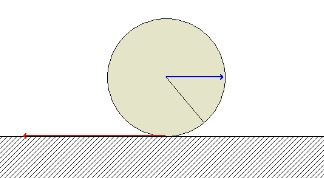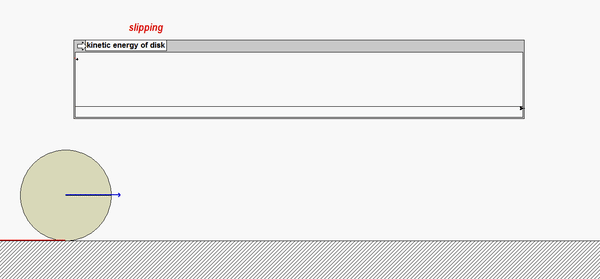Problem
Earlier, we saw that the work done by friction on a particle sliding on a rough surface is negative, causing a loss in total mechanical energy as the particle slides. Here, we will address the question: Does this result also apply to rigid bodies that roll and slip on a rough surface?
Consider a homogeneous circular disk that is placed on a rough, horizontal surface with a velocity to the right and with zero angular speed.

Since the initial rotation rate is zero, the disk will initially slip on the horizontal surface as the disk moves to the right. As the disk slips, there is a friction force acting to the left on the disk at the contact point. During slipping, the friction force opposes the direction of motion of the contact point – that is, the friction force acts to the left. As a result of the work done by this friction, the kinetic energy of the disk decreases. This is shown in the initial stage of the animation shown below.

As the disk continues to roll with slipping, the friction force also produces a clockwise rotation of the disk. Once disk picks up enough angular velocity to produce a no-slip condition at the contact point, the disk no longer slips, reducing the friction force to zero, and from that point on the disk does not see a loss in kinetic energy as it continues rolling without slipping. This is shown in the latter stage of the animation above.
In summary for this problem, the friction resulting from rolling with slipping on a rough surface does negative work; however, the subsequent rolling without slipping sees the friction force going to zero, with the disk continuing to move with constant speed.